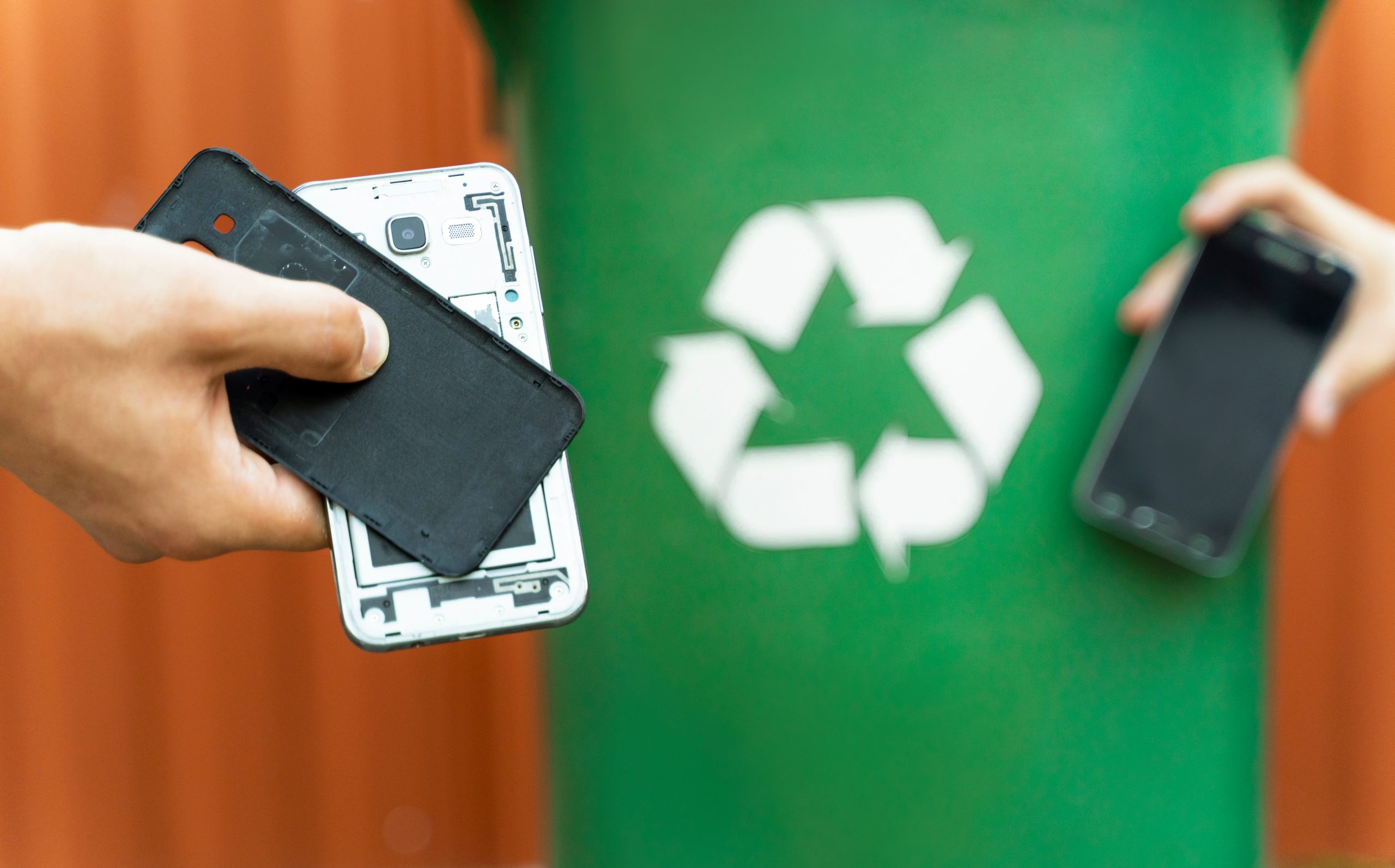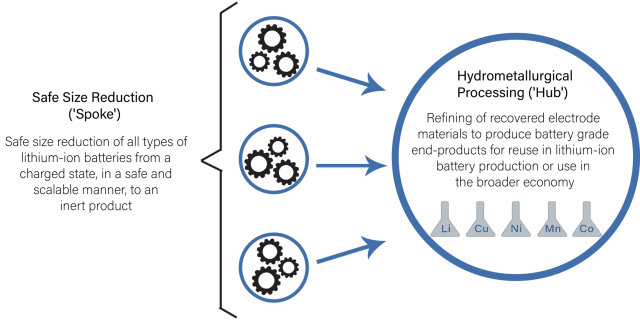



September 10, 2020



September 09, 2020 – Tom Lombardo
Renewable energy, electric vehicles, personal electronics and handheld power tools all have something in common: lithium-ion (Li-ion) batteries. To meet the increasing demand for these portable powerhouses, Tesla opened its first battery “gigafactory” in 2016, and several more have popped up around the globe since then. Roughly a million electric vehicles (EVs) were produced in 2017; by the end of this decade, another 30 million are likely to be on the road, turning the EV industry into the largest consumer of lithium and cobalt. The proliferation of EVs and other energy storage systems is expected to cause a sharp increase in the demand for lithium and other elements used in Li-ion batteries, which creates two problems. First, much of the critical material is imported from countries with questionable labor practices, loose environmental regulations and tenuous relationships with the U.S. Second, the batteries contain toxic and flammable chemicals that require proper handling throughout the entire battery life cycle, including the end-of-life stage.
The good news is that each of the above problems is, in fact, the solution to the other. While there isn’t enough domestic lithium, cobalt and nickel to satisfy the EV industry, end-of-life Li-ion batteries can be ‘mined” for these elements. Even better, extracting the substances through recycling has a much smaller environmental footprint than mining the raw materials from the ground. The bad news is that Li-ion battery recycling is not being done on a large scale, due to a combination of economic and technological factors. Currently, less than 5 percent of all end-of-life Li-ion batteries are recycled, but that’s about to change, thanks to some innovative researchers and companies.
When we say that an EV battery has reached the end of its useful life, that doesn’t mean the battery is dead—just that its storage potential has been reduced to around 80 percent of its original capacity. The battery is still capable of powering the vehicle, but with a shorter range. These batteries needn’t be recycled at this point; instead, they can be refurbished and reused in stationary applications, like home energy storage systems, where the energy-to-weight ratio is not a factor. That addresses the landfill issue in the short term, but these batteries will eventually lose all capacity to store energy, so for the purposes of this discussion, we’ll assume that they are beyond the second-use stage and have no value other than as a source of materials.
The variety of battery form factors and cathode chemistries make processing a challenge. The first steps of recycling Li-ion batteries are discharge and disassembly, which are difficult to automate when batteries come in so many different sizes and shapes, so they’re usually completed using manual labor and hand tools.
Once the cells are removed from the packaging, the next step in the recycling process is to extract constituent elements—a process that currently focuses on the battery’s cathode terminal since it contains most of the difficult-to-obtain materials. With direct recycling, also known as cathode-to-cathode recycling, the battery is shredded and the materials are separated through mechanical means. Besides being nontoxic and using little energy, direct recycling retains the cathode’s crystalline structure, allowing it to be used in a new battery with little additional processing. In contrast, direct recycling only works when all batteries in a batch use the same cathode chemistry. This is a significant drawback, as the chemical makeup of the cathode is being tweaked by engineers in an effort to make better, less expensive batteries. Another downside of cathode-to-cathode recycling is that it only recovers 30 to 40 percent of the battery’s material.
A hydrometallurgical process—one that uses an acid solution to separate complex chemicals into individual elements—is more costly, energy intensive and complex, but it has the advantage of being agnostic with respect to cathode chemistries. Still, it only recovers about half of the battery’s mass.
While many companies are trying to design the Holy Grail of new batteries, two startups are developing innovative ways to recycle existing batteries. Duesenfeld claims that its recycling process can recover over 90 percent of a battery’s material, using an eco-friendly method that avoids the energy-intensive smelting process used in most battery recycling operations.
For safety, Duesenfeld employs a decentralized system that minimizes the travel distance to its recycling facilities. Upon arrival at a collection facility, the batteries are slowly discharged and disassembled. Then the cells are crushed in an inert nitrogen atmosphere to prevent spontaneous ignition. Electrolytes are vacuum evaporated and recovered, while the crushed material, which is now safe to transport, is sent to a central facility to be further processed. After mechanical sorting occurs, the company’s patented hydrometallurgical method separates the remaining material to recover cobalt, lithium, nickel, manganese and graphite.
A Canadian upstart, Li-Cycle, says that its method can recover 95 percent of a battery’s materials using a process that’s eco-friendly, safe, scalable and economically viable. Like Duesenfeld, Li-Cycle handles the hazardous materials in strategically placed spokes—modular, scalable facilities that discharge, disassemble, shred and sort—before transporting the safe components to a central hub for chemical separation. The process recovers graphite, cobalt, nickel, copper, manganese and battery-grade lithium from any of today’s Li-ion chemistries.

Li-Cycle began in 2016, conducting two years of research and development before building a demonstration hub and spoke in 2018. A year later, its first commercial spoke went online, with three more, as well as a commercial hub, expected to follow over the next three years.
As engineers, we’re trained to design products that are functional, efficient and affordable. The concept of “sustainable design” is just entering the engineering lexicon, and although it further complicates the design process by adding yet another conflicting factor, it’s essential that we design products that can be recycled at the end of their useful lives. Researchers at the Argonne National Laboratory (ANL) suggest a few practices that could improve the recyclability of Li-ion batteries, such as standardized sizes and form factors, and easy to disassemble packaging (e.g., fastening with screws instead of glue or with common adhesives that dissolve easily).
Northvolt is designing a recyclable EV battery, using QR codes to list chemicals (for automated sorting), and developing its own in-house recycling program, including robotic disassembly. The company employs an energy-hungry hydrometallurgical process but claims that it’s “greener” because the factory runs primarily on renewable energy. Northvolt believes that by 2030, its recycling process can deliver half of the raw materials needed to meet its expected production demand. The only question is whether there will be enough end-of-life Li-ion batteries available by that time.
Several nations are establishing regulations for handling spent EV batteries. China leads the pack by holding EV manufacturers responsible for tracking, collecting and recycling used EV batteries. Canada is considering similar legislation through its Extended Producer Responsibility (EPR) act. The U.S. is leaving regulation up to the states, while the Department of Energy is offering $5.5 million in prizes to companies that develop processes to collect, sort, store, transport and recycle Li-ion batteries.
With appropriate incentives and regulations, the problems of limited material and hazardous waste associated with Li-ion batteries can be overcome. Fortunately, we have a few years before today’s EV batteries reach the end of their lives, and I’m confident that we’re up for the challenge.
To learn more about battery recycling, read Battery Recycling Technologies – Part 1: Introduction and Recycling Preparation.
